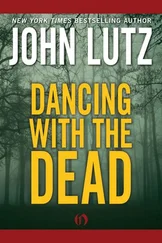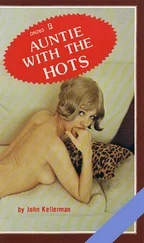John Wohlstetter - Sleepwalking with the Bomb
Здесь есть возможность читать онлайн «John Wohlstetter - Sleepwalking with the Bomb» весь текст электронной книги совершенно бесплатно (целиком полную версию без сокращений). В некоторых случаях можно слушать аудио, скачать через торрент в формате fb2 и присутствует краткое содержание. Город: Seattle, Год выпуска: 2012, ISBN: 2012, Издательство: Discovery Institute Press, Жанр: История, military, Политика, Публицистика, на английском языке. Описание произведения, (предисловие) а так же отзывы посетителей доступны на портале библиотеки ЛибКат.
- Название:Sleepwalking with the Bomb
- Автор:
- Издательство:Discovery Institute Press
- Жанр:
- Год:2012
- Город:Seattle
- ISBN:978-1-93659-906-6
- Рейтинг книги:3 / 5. Голосов: 1
-
Избранное:Добавить в избранное
- Отзывы:
-
Ваша оценка:
- 60
- 1
- 2
- 3
- 4
- 5
Sleepwalking with the Bomb: краткое содержание, описание и аннотация
Предлагаем к чтению аннотацию, описание, краткое содержание или предисловие (зависит от того, что написал сам автор книги «Sleepwalking with the Bomb»). Если вы не нашли необходимую информацию о книге — напишите в комментариях, мы постараемся отыскать её.
RICHARD PERLE, Resident Fellow, American Enterprise Institute and Assistant Secretary of Defense, 1981–1987 Sleepwalking with the Bomb
Sleepwalking with the Bomb — читать онлайн бесплатно полную книгу (весь текст) целиком
Ниже представлен текст книги, разбитый по страницам. Система сохранения места последней прочитанной страницы, позволяет с удобством читать онлайн бесплатно книгу «Sleepwalking with the Bomb», без необходимости каждый раз заново искать на чём Вы остановились. Поставьте закладку, и сможете в любой момент перейти на страницу, на которой закончили чтение.
Интервал:
Закладка:
Upon reaching Hiroshima, Enola Gay released the A-bomb at 31,600 feet. It took 45.5 seconds for the bomb to fall to the detonation altitude of 1,900 feet, selected to be high enough so that the fireball would not touch the ground and the radius of total destruction would be maximal: 3,000 feet. The uranium-fueled bomb detonated at 8:15 a.m., right on target in the center of the city, killing some one-third of the city’s 365,000 inhabitants, many within minutes. Only 1.4 percent of the bomb’s 140 pounds of uranium fissioned before the assembly blew apart and its mass became instantaneously subcritical, ending further chain reaction. The estimated yield for Little Boy was 14 kilotons, equivalent to 14,000 tons of TNT. This was 2,300 times the explosive power of the six-ton “Tallboy” bombs the British used to sink the super-battleship Tirpitz . Enola Gay’s crew could still see the mushroom cloud from 360 miles away, looking back while returning to base. [44] The Hiroshima bomb was originally dubbed “Thin Man” after the Dashiell Hammett fictional detective, while “Fat Man” was the nickname of the Caspar Gutman character played by Sydney Greenstreet in the film of Hammett’s novel The Maltese Falcon ; Thin Man was shortened and then renamed Little Boy.
Three days later another B-29, Bock’s Car, took off from Tinian. It dropped the plutonium-fueled 10,800-pound Fat Man on Nagasaki, struck because primary target Kokura was closed in by cloud cover. The bomb detonated 1,800 feet above ground. It was more powerful due to the greater efficiency of plutonium fission: 17 percent of its 13.6 pounds of plutonium fissioned, giving it 12 times the efficiency of Little Boy. It yielded some 21 kilotons. Nearly half—5,300 pounds—of its weight was conventional high explosive encircling the plutonium; it would compress the dense plutonium into the size of a tennis ball—about the size of the orange-sized bomb Winston Churchill envisioned in 1924 someday destroying a city. [45] Because Fat Man missed its aim point by over two miles the death toll was about half that for Hiroshima. This dramatically taught the first nuclear-age targeting lesson: accuracy is a greater factor in a nuclear weapon’s overall destructiveness than is yield. It is for that precise reason that as missiles became far more accurate their warhead yields even more dramatically declined.
While many scientists who worked on the bomb expressed regret later, President Truman never looked back. Once, Oppenheimer met with President Truman and told him: “I feel I have blood on my hands.” To which Truman was later heard to mutter: “Blood on his hands! Dammit, he hasn’t half as much blood on his hands as I have. You just don’t go around bellyaching about it.”
Already in 1944, the U.S. had begun the landmark Strategic Bombing Survey to assess the effects of long-range bombing on Germany. The survey found that bombing Germany would in many respects be ineffective. Targets like ball-bearing plants proved easy for the Germans to rebuild. The Allies had ignored hard-to-replace transportation and electric grid networks until late in the war. Their early destruction would have accelerated the war’s end.
When it went to Japan, the survey’s findings were far different. The intense bombing campaign inaugurated by General Curtis LeMay began with the Tokyo raid of March 9–10, 1945. It killed over 100,000 people and erased one-quarter of the city. Fire bombings claimed far more total lives than the two atomic bombs. In all, 600,000 Japanese were killed in the B-29 raids during the last five months of the war. The survey noted that with enough incendiary bombs LeMay’s B-29 air armada could have destroyed every city in Japan with a population of more than 30,000 people.
The survey reached three important conclusions as to atomic weapons. First, the firebombing aerial campaign alone—without atomic bombs—would have forced Japan’s leaders to accept unconditional surrender. (This conclusion was disputed by many commanders and by President Truman—diehards in the militarist Japanese cabinet wanted to fight on, even after the A-bomb dropped. Only the intervention of Emperor Hirohito, then still regarded as divine, tilted the balance towards surrender.) Second, the atomic bomb multiplied a bomber’s destructive power by 50 to 250 times, depending upon the nature and size of the target. Third, while the basic principles of war (unstated in the report), and units such as ships and infantry, would remain in use, atomic weapons would force radical alteration in tactics.
Strategically, on the other hand, the surveyors thought the impact of the atomic bomb would be modest. Only the advent of a practical, deliverable hydrogen bomb, with its thousand-fold increase over the atom bomb’s destructive power, convinced planners and commanders that the strategic world had fundamentally changed too.
President Truman decided to drop the bomb to bring the quickest possible end to what had been nearly four years of sanguinary conflict in the Pacific. He had been advised that troops invading the Japanese Home Islands would suffer roughly the 35 percent casualty rate that had proven the case during the spring 1945 Okinawa campaign. With 750,000 troops slated to land on the largest island, Kyushu, that likely meant more than a quarter-million Allied toll for taking a single one of Japan’s four Home Islands. Indeed, fear of mass troop carnage led FDR’s chief of staff, General George C. Marshall, to inquire of Manhattan Project chief General Leslie Groves if atom bombs could be used as tactical weapons to drop on Japanese defenders in event of a Kyushu landing.
To forestall such a landing Truman warned after Hiroshima: “If [Japanese leaders] do not now accept our terms they may expect a rain of ruin from the air, the likes of which has never been seen on this Earth.” Truman was relieved when the Japanese surrendered, because of Allied lives thus saved, and because he had planned to drop the third atom bomb on Tokyo (already ravaged by the March 1945 fire raid). Yet Truman said in his 1953 farewell address that “starting an atomic war is totally unthinkable for rational men.”
The Disarmers
CALLS FOR world disarmament began almost immediately after General Douglas MacArthur accepted Japan’s surrender on the deck of the battleship Missouri on September 2, 1945. But as noted in chapter 4, the movement for world disarmament dates back to the late nineteenth century. Utopian views became commonplace among disarmers in the run-up to World War I.
In his 1914 novel The World Set Free , H. G. Wells foresaw a war with “atomic bombs” releasing the energy of the sun, followed by total disarmament and world peace. Wells offered a vision of World War I biplanes carrying small bombs that an aviator could push out. Derived from a fictional element called “carolinum,” the devices did not simply explode, but burned for a month, releasing toxic elements and fire. Targets hit during the imaginary conflict included London, Berlin, Paris, and the dikes that protect Holland from the sea, causing that country to be submerged. Following a series of intrigues, the heroes stop the secret plot of a small cabal of evil leaders and, as a result, world peace blossoms and wars end.
The real world challenge was, however, to prove far more complex and less amenable to utopian solutions. On June 11, 1945, a group of scientists led by physicist Leo Szilard called for demonstrating the bomb’s power but urged it not be used against Japan:
If the United States would be the first to release this new means of indiscriminate destruction upon mankind, she would sacrifice public support throughout the world, precipitate the race of armaments, and prejudice the possibility of reaching an international agreement on the future control of such weapons.
Читать дальшеИнтервал:
Закладка:
Похожие книги на «Sleepwalking with the Bomb»
Представляем Вашему вниманию похожие книги на «Sleepwalking with the Bomb» списком для выбора. Мы отобрали схожую по названию и смыслу литературу в надежде предоставить читателям больше вариантов отыскать новые, интересные, ещё непрочитанные произведения.
Обсуждение, отзывы о книге «Sleepwalking with the Bomb» и просто собственные мнения читателей. Оставьте ваши комментарии, напишите, что Вы думаете о произведении, его смысле или главных героях. Укажите что конкретно понравилось, а что нет, и почему Вы так считаете.












